
Wine Culture and Information since 2002 - Volume 22
 Wine Culture and Information since 2002 - Volume 22 |
|
Comparing Prosecco di ValdobbiadeneAmong the most famous sparkling wines of Italy, Prosecco is produced in the Valdobbiadene and Conegliano areas and it takes its name from the grape with which it is made from |
|
Among the many bubbles of Italy, the ones produced in the Valdobbiadene and Conegliano areas certainly are among the most famous ones in the world. We are talkng about Prosecco, the white berried grape from which it is produced this renowned sparkling wine and which - because of its name - it sometimes causes confusion among consumers. Despite the name would make one think about particular organoleptic qualities, Prosecco is a grape, not a style of wine basically dry (secco means dry in Italian), something which is frequently believed by many. Even worse the reductive use of this term and which is frequently used by people in charge of serving wine: that deleterious term prosecchino - most of the times used for some disputable sparkling wines and of doubt quality - something which makes one think about an “ordinary” or low quality wine. Prosecco, once again, is a white berried grape from which are produced wines - also in the dry style - and of which the most famous one is the sparkling style produced in the area of Denominazione di Origine Controllata (DOC) of Valdobbiadene and Conegliano, in Veneto in the province of Treviso. The origin of Prosecco grape is pretty uncertain. According to some, this grape comes from Prosecco village, in the province of Trieste, therefore in Friuli Venezia Giulia region, where the grape is called Glera. According to other hypothesis, Prosecco comes from the Colli Euganei area, in the territory of Padua, where the grape is known as Serpino. Another theory believes Prosecco grape comes from the ancient Pucino grape, known since the times of ancient Romans. An important job of selection and improvement of the variety was done by the Experiental Institute for Viticulture of Conegliano. In particular, Prosecco was used by Prof. Luigi Manzoni during his important experiments in the 1930s, with which he created the Incrocio Manzoni 2.15 grape by crossing it with Cabernet Sauvignon. In the Conegliano and Valdobbiadene areas, Prosecco is produced in the styles slightly sparkling, which can be recognized by the so called “tappo raso” (Italian for flat cork) and fastened with a string, and sparkling - the most common style - produced with the Martinotti method, also known as Carmat method.
|
|
Among the production areas of this wine, one is distinguished for the particular quality of its grapes: San Pietro di Barbozza, in the municipality of Valdobbiadene. Here are in fact found favorable environmental conditions, with hilly lands and always exposed to the sun, a surface of just 107 hectares from which are harvested the grapes destined to the famous Prosecco Superiore di Cartizze. Prosecco di Valdobbiadene e Conegliano is produced in tanks by using the method invented by wine maker Federico Martinotti in 1895, at that time headmaster of the “Royal School of Enology of Asti”. This method was then revised and improved in 1907 by Eugène Charmat - a French engineer - and today this method is mainly identified with his name. According to the production disciplinary, Prosecco di Valdobbiadene e Conegliano can be produced in any style allowed by sparkling wine laws, with the exception of “extra-brut” and “sweet” styles. In the production of this wine is allowed a maximum of 15% of the white berried grapes Verdiso, Biancheria, Perera and Prosecco Lungo.
The most common style of Prosecco certainly is extra dry, although today it is getting more and more common, as well as appreciated, the brut style. Another style to be mentioned is dry, therefore pretty sweet, which offers interesting enogastronomical possibilities in the matching with desserts. The first wine selected for our comparative tasting is Bortolin's Prosecco di Valdobbiadene Extra Dry Rù, produced with 100% Prosecco. The second wine if Ruggeri's Prosecco di Valdobbiadene Superiore di Cartizze, also in this case produced with 100% Prosecco. The last wine of the comparative tasting is Merotto's Prosecco di Valdobbiadene Dry La Primavera di Barbara, sweeter than the previous ones and mainly produced with Prosecco to which was added a small quantity of Perera grape. The three wines will be served at the temperature of 10° C (50° F) and served in three ISO tasting glasses.
|
||||||||
|
Just like all sparkling wines, also in Prosecco di Valdobbiadene e Conegliano the evaluation of perlage - the joyous dance of bubbles moving from the bottom of the glass upwads the surface - represents an important aspect. Concerning this quality it should be said perlage in sparkling wines produced with the Martinotti method - or Charmat - is generally coarser than the one observed in “classic method” sparkling wines. Bubbles usually have a bigger size than classic method and their persistence is usually shorter. The color of Prosecco generally show greenish yellow hues - sometimes straw yellow - with evident nuances of greenish yellow. Prosecco di Valdobbiadene is generally consumed within two years from production in order to better appreciate its fresh qualitities, therefore the evolution of color over time is a characteristic which can be ignored in this wine. We will begin with the evaluation of the first wine, Bortolin's Prosecco di Valdobbiadene Extra Dry Rù. By holding the glass in vertical position, we will evaluate the development of perlage: we will see a good quanity of bubbles having a small size, of good persstence. By tilting the glass on a white surface, we will continue the evaluation by examining the color. At the base of the glass will be observed a pale straw yellow color with evident nuances of greenish yellow, observed at the edge of the wine towards the opening of the glass. Also the second wine - Ruggeri's Prosecco di Valdobbiadene Superiore di Cartizze - shows a fine and persistent perlage, with a brilliant greenish yellow color - paler than the previous wine - and nuances of greenish yellow. Let's now pass to the evaluation of the third wine of our comparative tasting: Merotto's Prosecco di Valdobbiadene Dry La Primavera di Barbara. Also in this wine it can be observed a good perlage - fine and persistent - and a brilliant greenish yellow color and nuances of greenish yellow.
|
|
Thanks to the method used for the production of Prosecco di Valdobbiadene, fresh aromas of flowers and fruit will be the organoleptic qualities mainly perceived to the nose. As opposed to classic method - which favors the development of complex aromas - with the Charmat method are being obtained sparkling wines in a shorter time, favoring the keeping of “fresher” aromas typical in white wines. In Prosecco di Valdobbiadene will be mainly perceived aromas of fruit and flowers, sometimes dried fruit as well. Among the most common fruit aromas in Prosecco are mentioned apple, pear and peach, however in this wine are also find aromas recalling tropical fruits, such as pineapple, lychee and banana, as well as aromas recalling more common fruits such as citrus fruits and plum. The world of flowers of Prosecco is colored of white and yellow. Broom, wistaria, hawthorn and acacia are the most frequent flowery aromas found in Prosecco di Valdobbiadene, rarely elder, chamomile and jasmine. We will begin the evaluation of aromas from the first wine of our comparative tasting: Bortolin's Prosecco di Valdobbiadene Extra Dry Rù. By holding the glass in vertical position - and without swirling - we will evaluate opening aromas, that is the aromas made of “light” volatile substances requiring a small quantity of oxygen in order to be appreciated. To the nose will be perceived clean and intense aromas of apple, pear and pineapple: a pretty common opening for Prosecco di Valdobbiadene. Let's now proceed by swirling the glass, in order to favor the volatilization of “heavy” aromatic substances. The aromatic sequence of this first wine will be completed with aromas of hawthorn, wistaria, broom, peach and plum, also in this case, very frequent aromas in Prosecco. It should be noticed the freshness of aromas and the lack of complex sensations, very diferent from what can be appreciated in a classic method sparkling wine. Let's now pass to the evaluation of the aromas of the second wine of our comparative tasting: Ruggeri's Prosecco di Valdobbiadene Superiore di Cartizze. By holding the glass in vertical position and without swirling, we will evaluate opening aromas which will be characterized by banana, pineapple and lychee, a pretty “exotic” opening and certainly different from the previous wine. Let's now swirl the glass in order to appreciate all the other aromas. It will be perceived aromas of acacia, wistaria, green apple, pear, peach and a pleasing hint of almond. Let's now pass to Merotto's Prosecco di Valdobbiadene Dry La Primavera di Barbara. The opening of this third wine is characterized by aromas of pear, apple and pineapple, very pleasing and clean. After having swirled the glass, we will proceed with the evaluation of other aromas which will complete the olfactory profile of the wine. From the glass will be perceived aromas of peach, tangerine, wistaria, citrus fruits, hawthorn, plum and a pleasing hint of sage.
|
||||
|
Just like all sparkling wines, one of the main qualities during the tasting is effervescence produced by carbon dioxide. Effervescence in sparkling wines produced with the Charmat method usually has a different behaviour from the ones produced with the classic method, that is refermented in bottle. In Charmat method sparkling wines the release of carbon dioxide is quicker and “immediate”, therefore the perception of effervescence will be higher. Because of the many production styles, also sweetness represents an important aspect: from brut to sweet style, sugar will significantly affect the gustatory qualities of the wine, in particular the perception of acidity. The alcohol by volume in Prosecco di Valdobbiadene e Conegliano is generally low, it rarely goes beyond 12.5%, with an average content of about 11.5%. The first wine of which we will evaluate organoleptic qualities in taste is Bortolin's Prosecco di Valdobbiadene Extra Dry Rù. The attack of this wine is efervescent and crisp, with a slight sweetness, however appreciable, which makes the wine balanced. It should be noticed the good correspondence to the nose, in particular apple and pear. Let's now proceed to the evaluation of Ruggeri's Prosecco di Valdobbiadene Superiore di Cartizze. Also the attack of this Prosecco is effervescent and crisp, with the usual slight sweetness, typical in most of the sparkling wines produced in Valdobbiadene and Conegliano areas. The attack of the third wine - Merotto's Prosecco di Valdobbiadene Dry La Primavera di Barbara - is not so different from the previous ones, with an evident effervescence and crispness, however in this case, sweetness is pretty perceptible and very pleasing. It should also be noticed the structure of these wines: a pretty light body, however apropriate to the characeristics of Prosecco di Valdobbiadene.
|
|
One of the qualities which is mainly appreciated in Prosecco di Valdobbiadene e Conegliano is represented by freshness, both in aromas and flavors, qualities which will be well perceptible also in the final phase of the tasting. The finish of Bortolin's Prosecco di Valdobbiadene Extra Dry Rù is persistent, leaving in the mouth clean and intense flavors of apple, pear and plum. The finish of Ruggeri's Prosecco di Valdobbiadene Superiore di Cartizze is persistent with pleasing flavors of pear, banana and pineapple. Also the finish of the third wine of our comparative tasting - Merotto's Prosecco di Valdobbiadene Dry La Primavera di Barbara - is persistent and leaves in the mouth pleasing and intense flavors of pear, pineapple and peach to which is added the pleasing sensation of sweetness. It should also be noticed the sensation of crispness which can be perceived in the mouth after having swallowed the wine, as well as elegant and clean flavors.
|
Wines of the Month |
|
|
|
Score legend Prices are to be considered as indicative. Prices may vary according to the country or the shop where wines are bought |
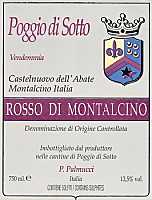
|
|
Rosso di Montalcino 2005 |
|
| Fattoria Poggio di Sotto (Tuscany, Italy) | |
| Grapes: Sangiovese Grosso | |
| Price: € 34.00 | Score: |
| This Rosso di Montalcino shows a brilliant ruby red color and nuances of garnet red, moderate transparency. The nose reveals intense, clean, pleasing and refined aromas that start with hints of black cherry, plum and violet followed by aromas of raspberry, blueberry, vanilla, pink pepper, chocolate and menthol. The mouth has good correspondence to the nose, a tannic attack and pleasing crispness, however balanced by alcohol, good body, intense flavors. The finish is persistent with flavors of black cherry and plum. This Rosso di Montalcino ages for two years in cask. | |
| Food Match: Roasted meat, Stewed and braised meat, Hard cheese | |
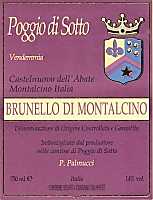
|
|
Brunello di Montalcino 2003 |
|
| Fattoria Poggio di Sotto (Tuscany, Italy) | |
| Grapes: Sangiovese Grosso | |
| Price: € 75.00 | Score: |
| This Brunello di Montalcino shows a brilliant ruby red color and nuances of garnet red, moderate transparency. The nose denotes intense, clean, pleasing, refined and elegant aromas that start with hints of black cherry, plum and violet followed by aromas of blackberry, blueberry, vanilla, tobacco, cocoa, menthol and leather. The mouth has good correspondence to the nose, a tannic attack and pleasing crispness, however balanced by alcohol, full body, intense flavors. The finish is persistent with flavors of black cherry, plum and blackberry. This Brunello di Montalcino ages for 4 years in cask followed by at least 12 months of aging in bottle. | |
| Food Match: Game, Roasted meat, Braised and stewed meat, Hard cheese | |

|
|
Tredici di Terre Verdiane Fortana |
|
| Cantine Ceci (Emilia Romagna, Italy) | |
| Grapes: Fortana | |
| Price: € 9.50 | Score: |
| Tredici di Terre Verdiane Fortana shows a brilliant ruby red color and nuances of purple red, moderate transparency, good effervescence. The nose denotes intense, clean, pleasing and refined aromas that start with hints of black cherry, blackberry and raspberry followed by aromas of strawberry, blueberry, violet and cyclamen. The mouth has good correspondence to the nose, an effervescent attack, pleasing sweetness and astringency, however balanced by alcohol, good body, intense flavors, pleasing crispness. The finish is persistent with flavors of black cherry, blueberry and raspberry. Tredici di Terre Verdiane Fortana ferments in tanks for 2-3 months. | |
| Food Match: Fruit desserts, Cream desserts | |

|
|
Otello Nero di Lambrusco |
|
| Cantine Ceci (Emilia Romagna, Italy) | |
| Grapes: Lambrusco Maestri | |
| Price: € 8.00 | Score: |
| Otello Nero di Lambrusco shows a deep ruby red color and nuances of purple red, little transparency, effervescent. The nose reveals intense, clean, pleasing and refined aromas that start with hints of black cherry, raspberry and blueberry followed by aromas of violet, strawberry, blackberry, plum and geranium. The mouth has good correspondence to the nose, an effervescent attack, pleasing crispness and astringency, however balanced by alcohol, good body, intense flavors. The finish is persistent with flavors of black cherry, strawberry and blueberry. Otello Nero di Lambrusco ferments for 3 months in tanks. | |
| Food Match: Cold cuts, Pasta with meat, Boiled meat | |
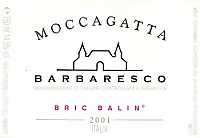
|
|
Barbaresco Bric Balin 2001 |
|
| Moccagatta (Piedmont, Italy) | |
| Grapes: Nebbiolo | |
| Price: € 36.00 | Score: |
| Barbaresco Bric Balin shows a brilliant ruby red color and nuances of brick red, moderate transparency. The nose reveals intense, clean, pleasing, refined and elegant aromas which start with hints of cherry, plum and violet followed by aromas of raspberry, rose, vanilla, tobacco, cocoa, cinnamon, leather, licorice, pink pepper, mace and menthol. The mouth has excellent correspondence to the nose, a tannic attack and pleasing crispness, however balanced by alcohol, full body, intense flavors, agreeable. The finish is persistent with flavors of cherry, plum and raspberry. A well made wine. Barbaresco Bric Balin ages for 18 months in barrique. | |
| Food Match: Game, Roasted meat, Braised and stewed meat, Hard cheese | |

|
|
Barbaresco Bric Balin 2004 |
|
| Moccagatta (Piedmont, Italy) | |
| Grapes: Nebbiolo | |
| Price: € 32.00 | Score: |
| Barbaresco Bric Balin shows a brilliant ruby red color and nuances of brick red, moderate transparency. The nose reveals intense, clean, pleasing, refined and elegant aromas which start with hints of cherry, plum and violet followed by aromas of raspberry, strawberry, rose, vanilla, tobacco, blueberry, pink pepper, licorice, chocolate, cinnamon, mace and menthol. The mouth has excellent correspondence to the nose, a tannic attack and pleasing crispness, however balanced by alcohol, full body, intense flavors, agreeable. The finish is very persistent with long flavors of cherry, plum and raspberry. A well made wine. Barbaresco Bric Balin ages for 18 months in barrique. | |
| Food Match: Game, Roasted meat, Braised and stewed meat, Hard cheese | |
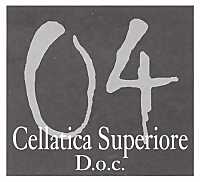
|
|
Cellatica Superiore 2004 |
|
| Cà del Vent (Lombardy, Italy) | |
| Grapes: Barbera (30%), Marzemino (30%), Incrocio Terzi N. 1 (25%), Schiava Gentile (5%), Cabernet Sauvignon (5%), Merlot (5%) | |
| Price: € 10.00 | Score: |
| This wine shows an intense ruby red color and nuances of ruby red, little transparency. The nose denotes intense, clean, pleasing and refined aromas that start with hints of black cherry and plum followed by aromas of blueberry, violet, vanilla, cinnamon and fern. The mouth has good correspondence to the nose, a tannic attack and however balanced by alcohol, good body, intense flavors, pleasing crispness. The finish is persistent with flavors of black cherry, blueberry and plum. This Cellatica Superiore ages for 12 months in barrique followed by at least 18 months of aging in bottle. | |
| Food Match: Broiled meat and barbecue, Roasted meat, Stewed meat | |
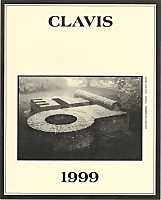
|
|
Cellatica Superiore Clavis 1999 |
|
| Cà del Vent (Lombardy, Italy) | |
| Grapes: Barbera (30%), Marzemino (30%), Incrocio Terzi N. 1 (25%), Schiava Gentile (5%), Cabernet Sauvignon (5%), Merlot (5%) | |
| Price: € 28.00 | Score: |
| Cellatica Superiore Clavis shows an intense ruby red color and nuances of garnet red, little transparency. The nose denotes intense, clean, pleasing and refined aromas that start with hints of plum, black cherry and blueberry followed by aromas of dried violet, vanilla, cocoa, tobacco, leather, eucalyptus, licorice and rhubarb. The mouth has good correspondence to the nose, a tannic attack and however balanced by alcohol, good body, intense flavors, agreeable. The finish is persistent with flavors of plum, black cherry and blueberry. Cellatica Superiore Clavis ages for 24 months in barrique followed by at least 5 years of aging in bottle. | |
| Food Match: Roasted meat, Stewed and braised meat, Hard cheese | |

|
|
Vino Nobile di Montepulciano 2004 |
|
| Dei (Tuscany, Italy) | |
| Grapes: Prugnolo Gentile (80%), Canaiolo Nero (15%), Mammolo (5%) | |
| Price: € 15.75 | Score: |
| This Vino Nobile di Montepulciano shows an intense ruby red color and nuances of garnet red, moderate transparency. The nose reveals intense, clean, pleasing and refined aromas which start with hints of black cherry, plum and violet followed by aromas of raspberry, rose, vanilla, tobacco, cinnamon, chocolate and pink pepper. The mouth has good correspondence to the nose, a tannic attack and however balanced by alcohol, full body, intense flavors. The finish is persistent with flavors of black cherry, plum and raspberry. This Vino Nobile di Montepulciano ages for at least 24 months in cask followed by 6 months of aging in bottle. | |
| Food Match: Game, Roasted meat, Braised and stewed meat, Hard cheese | |
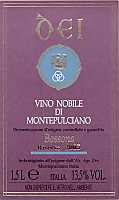
|
|
Vino Nobile di Montepulciano Riserva Bossona 2003 |
|
| Dei (Tuscany, Italy) | |
| Grapes: Prugnolo Gentile | |
| Price: € 27.00 | Score: |
| Vino Nobile di Montepulciano Riserva Bossona shows an intense ruby red color and nuances of garnet red, moderate transparency. The nose reveals intense, clean, pleasing, refined and elegant aromas which start with hints of black cherry, plum and violet followed by aromas of blueberry, rose, tobacco, raspberry, vanilla, chocolate, cinnamon, pink pepper, mace and menthol. The mouth has good correspondence to the nose, a tannic attack and pleasing crispness, however balanced by alcohol, full body, intense flavors. The finish is persistent with flavors of black cherry, plum and blueberry. A well made wine. It ages for 24 months in cask followed by 12 months of aging in bottle. | |
| Food Match: Game, Roasted meat, Braised and stewed meat, Hard cheese | |
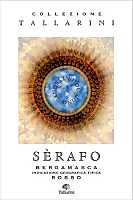
|
|
Serafo 2005 |
|
| Tallarini (Lombardy, Italy) | |
| Grapes: Cabernet Sauvignon (60%), Merlot (40%) | |
| Price: € 22.00 | Score: |
| Serafo shows a brilliant ruby red color and nuances of ruby red, little transparency. The nose denotes intense, clean, pleasing and refined aromas that start with hints of black cherry, plum and black currant followed by aromas of violet, vanilla, eucalyptus, bell pepper, chocolate and tobacco. The mouth has good correspondence to the nose, a tannic attack and however balanced by alcohol, good body, intense flavors. The finish is persistent with flavors of plum, black currant and black cherry. Serafo ages for 12 months in barrique followed by at least 18 months of aging in bottle. | |
| Food Match: Roasted meat, Braised and stewed meat with mushrooms, Hard cheese | |
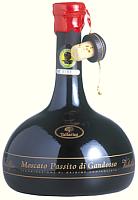
|
|
Valcalepio Moscato Passito di Gandosso 2003 |
|
| Tallarini (Lombardy, Italy) | |
| Grapes: Moscato di Scanzo | |
| Price: € 39.50 - 500ml | Score: |
| Valcalepio Moscato Passito di Gandosso shows a brilliant ruby red color and nuances of garnet red, moderate transparency. The nose reveals intense, clean, pleasing and refined aromas which start with hints of grape, strawberry and raspberry followed by aromas of plum, cyclamen, geranium, vanilla, pink pepper, cinnamon and clover. The mouth has good correspondence to the nose, a sweet and slightly tannic attack, pleasing crispness, however balanced by alcohol, good body, intense flavors, agreeable. The finish is persistent with flavors of strawberry, raspberry and cherry. A part of this wine ages in cherry wood casks. | |
| Food Match: Fruit tarts | |
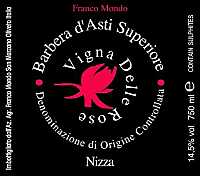
|
|
Barbera d'Asti Superiore Nizza Vigna delle Rose 2004 |
|
| Franco Mondo (Piedmont, Italy) | |
| Grapes: Barbera | |
| Price: € 12.00 | Score: |
| Barbera d'Asti Superiore Nizza Vigna delle Rose shows an intense ruby red color and nuances of garnet red, little transparency. The nose reveals intense, clean, pleasing and refined aromas that start with hints of cherry, plum and violet followed by aromas of vanilla, tobacco, chocolate and menthol. The mouth has good correspondence to the nose, a tannic attack and however balanced by alcohol, good body, intense flavors. The finish is persistent with flavors of cherry and plum. This barbera ages for few months in barrique. | |
| Food Match: Stuffed pasta with mushrooms, Broiled meat and barbecue, Stewed meat with mushrooms | |
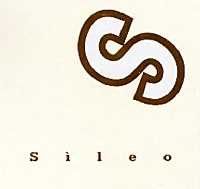
|
|
Piemonte Moscato Passito Sileo 2003 |
|
| Franco Mondo (Piedmont, Italy) | |
| Grapes: Moscato Bianco | |
| Price: € 16.50 - 500ml | Score: |
| This wine shows a brilliant amber yellow color and nuances of amber yellow, transparent. The nose reveals intense, clean, pleasing and refined aromas that start with hints of raisin, fig jam and candied fruits followed by aromas of dried apricot, quince jam, peach jam, date, lavender, vanilla, honey, citrus fruit peel and almond. The mouth has good correspondence to the nose, a sweet and round attack, however balanced by alcohol, good body, intense flavors, agreeable. The finish is persistent with flavors of raisin, fig jam and dried apricot. Piemonte Moscato Passito Sileo ferments and ages in barrique. | |
| Food Match: Confectionery, Fruit tarts, Hard and piquant cheese | |

|
|
Vallantica Rosso 2006 |
|
| Vallantica (Umbria, Italy) | |
| Grapes: Ciliegiolo (60%), Merlot (40%) | |
| Price: € 7.80 | Score: |
| Vallantica Rosso shows a brilliant ruby red color and nuances of ruby red, moderate transparency. The nose denotes intense, clean and pleasing aromas that start with hints of cherry, plum and violet followed by aromas of blueberry, raspberry, strawberry and cyclamen. The mouth has good correspondence to the nose, a slightly tannic attack and however balanced by alcohol, good body, intense flavors. The finish is persistent with flavors of cherry, plum and raspberry. Vallantica Rosso ages in steel tanks. | |
| Food Match: Broiled meat and barbecue, Stewed meat with mushrooms | |
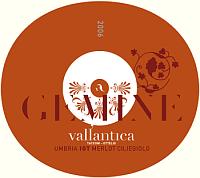
|
|
Gemine 2006 |
|
| Vallantica (Umbria, Italy) | |
| Grapes: Merlot (60%), Ciliegiolo (40%) | |
| Price: € 19.20 - 1.50 l | Score: |
| Gemine shows an intense ruby red color and nuances of garnet red, moderate transparency. The nose reveals intense, clean, pleasing and refined aromas which start with hints of black cherry, plum and black currant followed by aromas of violet, vanilla, tobacco and pink pepper. The mouth has good correspondence to the nose, a slightly tannic attack and however balanced by alcohol, good body, intense flavors. The finish is persistent with flavors of black cherry, plum and black currant. Gemine ages for 12 months in barrique followed by 3 months of aging in bottle. | |
| Food Match: Roasted meat, Braised and stewed meat, Hard cheese | |
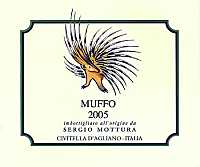
|
|
Muffo 2005 |
|
| Sergio Mottura (Latium, Italy) | |
| Grapes: Grechetto | |
| Price: € 17.80 - 375ml | Score: |
| Muffo shows a brilliant amber yellow color and nuances of amber yellow, transparent. The nose denotes intense, clean, pleasing, refined and elegant aromas that start with hints of dried apricot, date and honey followed by aromas of quince jam, chestnut, citron, almond, lavender, stewed apple, vanilla, stewed pear, citrus fruit peel and nail polish. The mouth has good correspondence to the nose, a sweet and round attack, however balanced by alcohol, good body, intense flavors, agreeable. The finish is persistent with flavors of dried apricot, date and honey. A well made wine. Muffo ages in barrique for 12 months followed by 6 months of aging in bottle. | |
| Food Match: Dried fruit tarts, Confectionery, Hard cheese | |
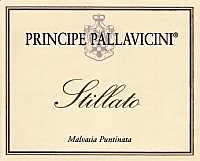
|
|
Stillato 2006 |
|
| Principe Pallavicini (Latium, Italy) | |
| Grapes: Malvasia del Lazio | |
| Price: € 13.50 - 500ml | Score: |
| Stillato shows a brilliant amber yellow color and nuances of amber yellow, transparent. The nose reveals intense, clean, pleasing, refined and elegant aromas that start with hints of raisin, dried fig and dried apricot followed by aromas of candied fruits, quince jam, date, vanilla, honey, almond and lavender. The mouth has good correspondence to the nose, a sweet and round attack, however balanced by alcohol, good body, intense flavors, agreeable. The finish is persistent with flavors of dried apricot, raisin and almond. Stillato ages for 10 months in barrique. | |
| Food Match: Confectionery, Dried fruit tarts | |
|
||||||||
|
DiWineTaste Polls
|
| |||||||
Privacy Policy | |||||||


| Copyright © 2002-2024 Antonello Biancalana, DiWineTaste - All rights reserved |
| All rights reserved under international copyright conventions. No part of this publication and of this WEB site may be
reproduced or utilized in any form or by any means, electronic or mechanical, without permission in writing from DiWineTaste. |